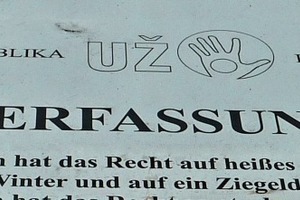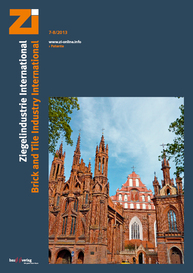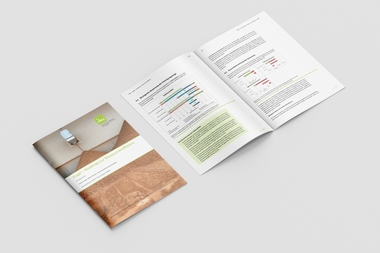People have the right to a tiled roof!
What do this issue‘s key themes “Raw materials andadditives” plus “Resource efficiency” have to do with the “right to a (clay-) tiled roof”?
Well, to use resources efficiently, we need durable, long-lasting products that are not harmful to us or our environment during and after their useful life. That that is no problem with a natural product like clay roof tiles is evidenced by the fact that they have been in use for thousands of years. On the other hand, the standards to be met by our pertinent products are becoming increasingly stringent.
Dipl.-Ing. Gerhard Koch is sure that resource efficiency, recycling and the closure of substance cycles are set to challenge the brick and tile industry in the years to come. By definition, resource efficiency includes the intelligent use of waste material from other industries. Part VI of our “Resource Efficiency in the Brick and Tile Industry” series is devoted to “Recycling Calcite from Marble Processing” as an additive for heavy clay products.
Abundant investigations have shown how to recognize the ceramic-technological characteristics of raw materials on the basis of material analyses (page 20). The comprehensive-as-possible use of even potentially troublesome raw materials also helps make production more resource-efficient and sustainable. Beginning on page 29, the drying and firing behavior of calcareous raw materials are described, the effects on fired clay products listed, and means of preventing relevant damage explained.
We have all seen beautiful Old Town districts with their harmonious collections of (often centuries-old) brick buildings and/or clay-tiled roofs. In the major Baltic cities, bricks and tiles are vital components of the historic city cores. One particularly lovely example is St. Anne‘s Church in Vilnius, the capital of Lithuania, which adorns this issue. In one of the oldest parts of Vilnius the residents declared its independence a few years ago as The Artists‘ Republic of Užupis. In addition to a flag and a president, Užupis also has its own constitution – stated in various languages on panels nailed to a wall. Article 2 of the English version states that “People have the right to a tiled roof”. These people have a far-sighted, sustainable way of thinking! On the other hand, clay products are more than just historic and traditional. The new Vilnius University library, with its impressive architecture, is protectively clad all around with ceramic façade panels, as to be seen in our architecture photo on page... Modern architecture with ceramic natural products: That is the way to go!
Yours,
Anett Fischer
Editor of Zi Brick and Tile Industry International







